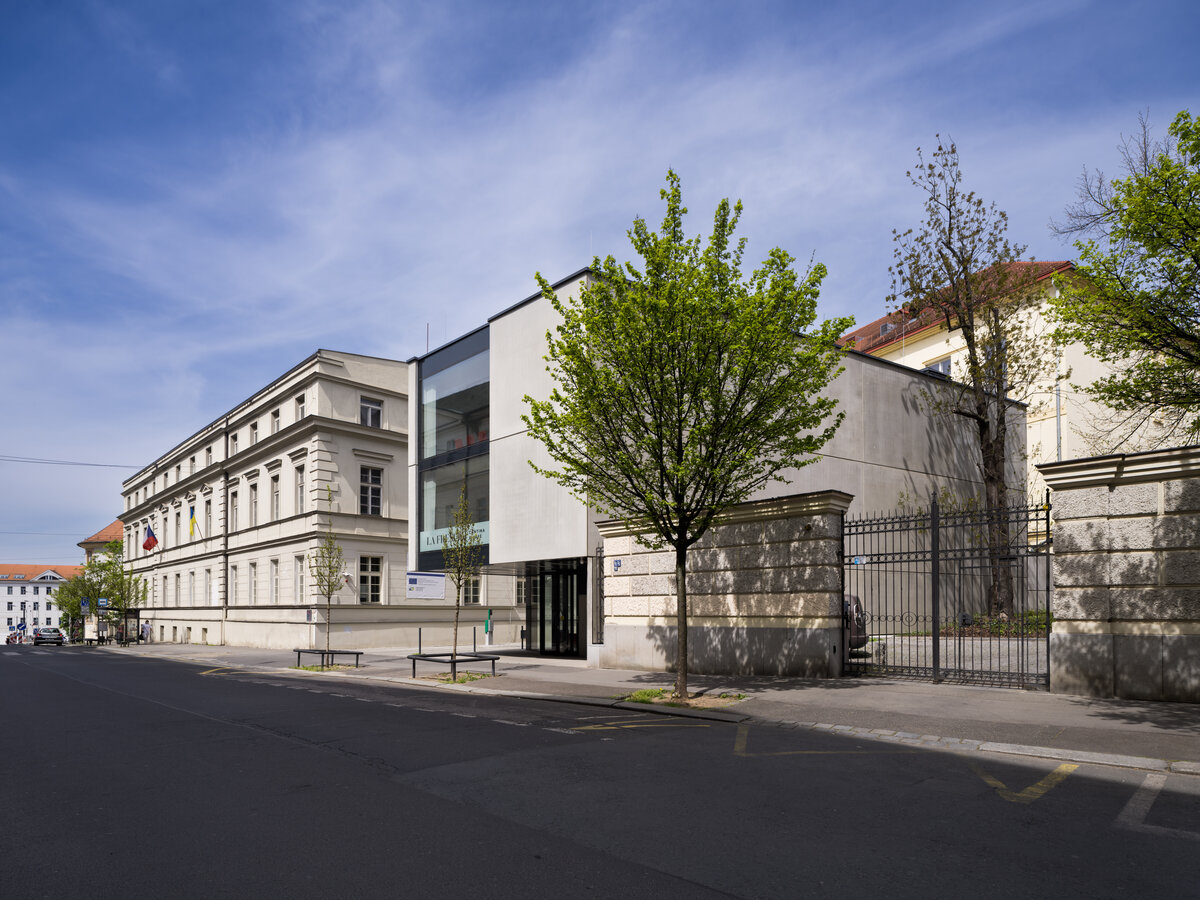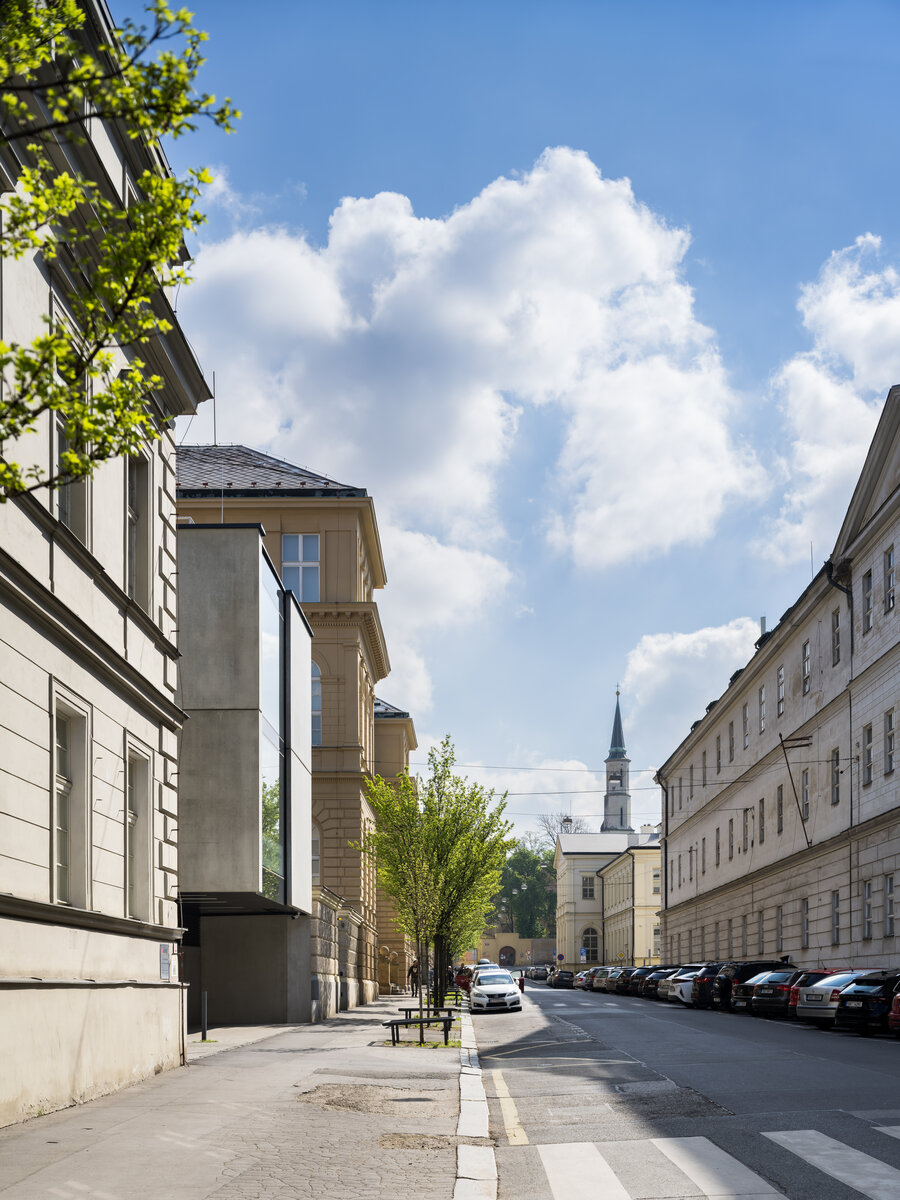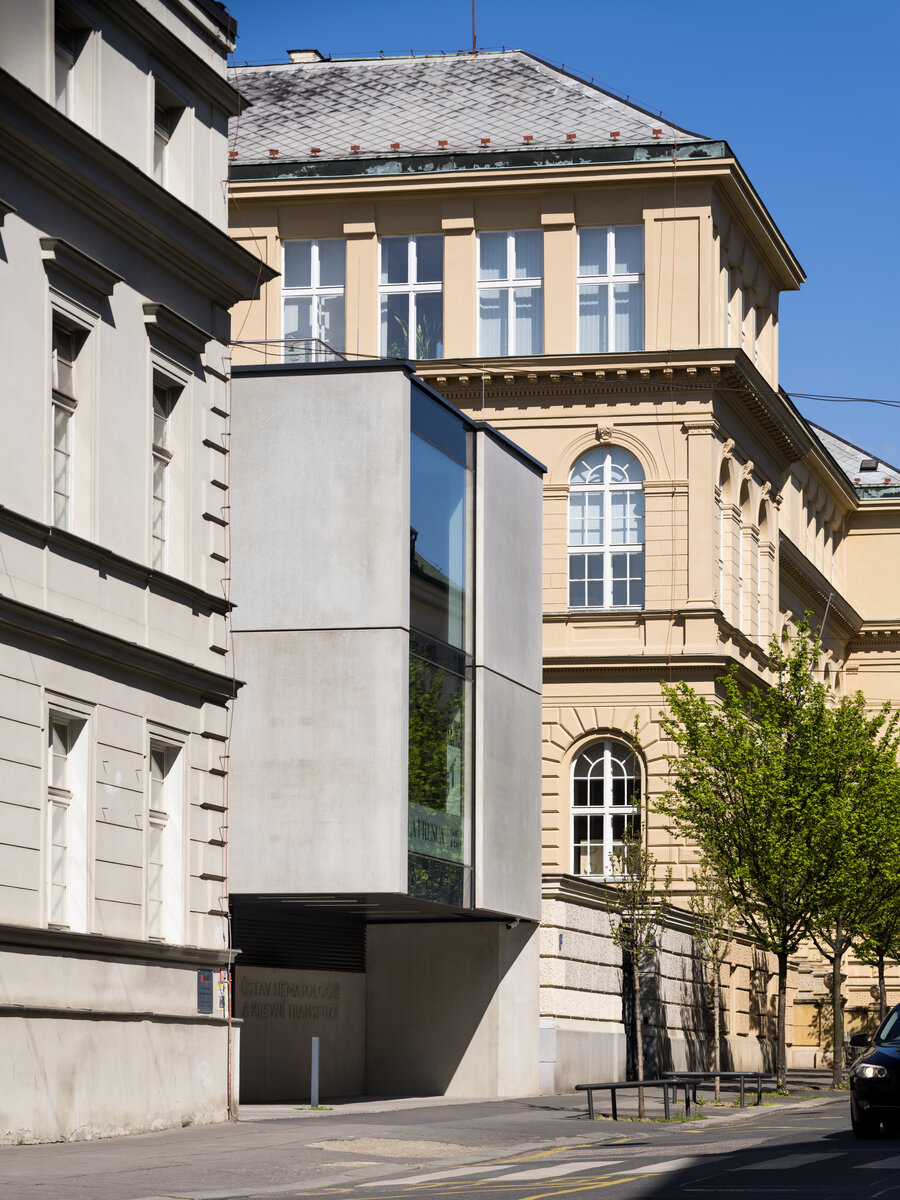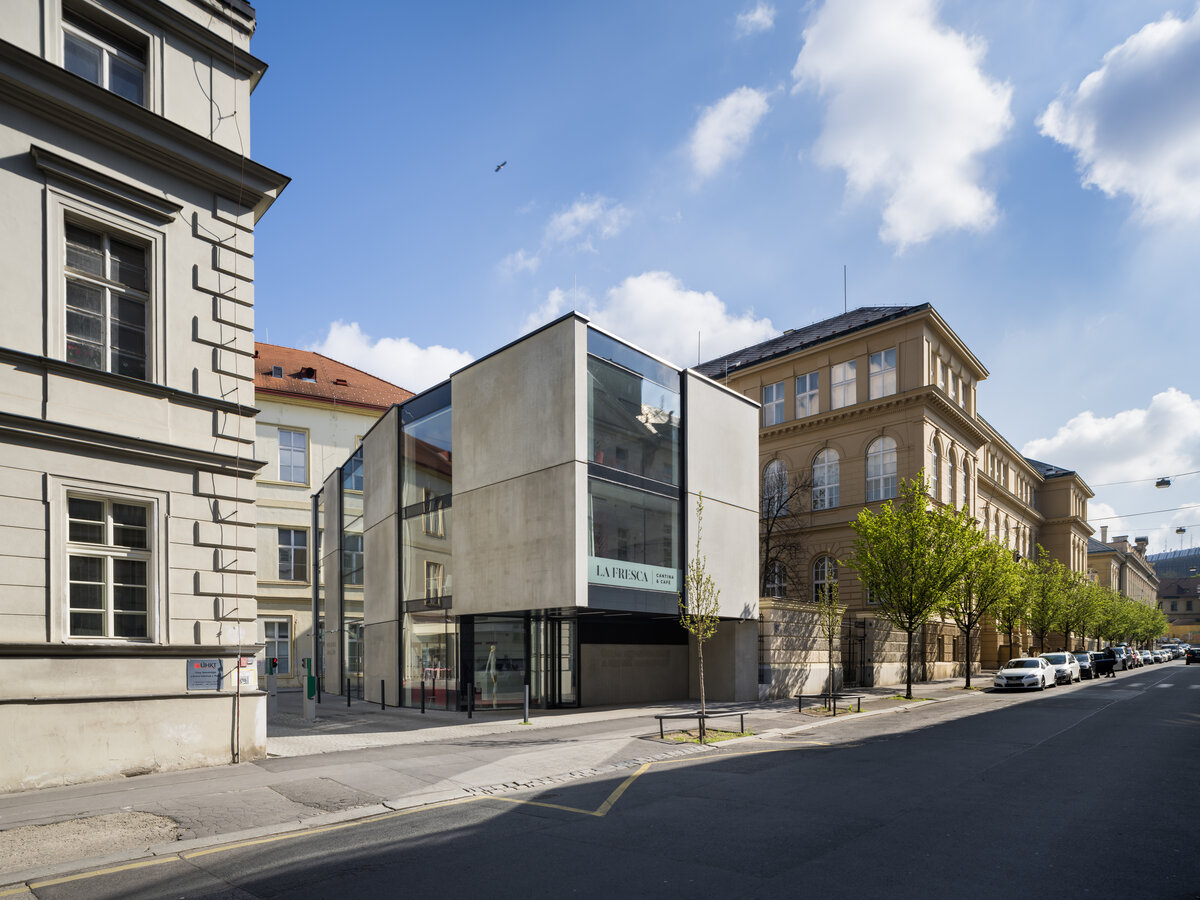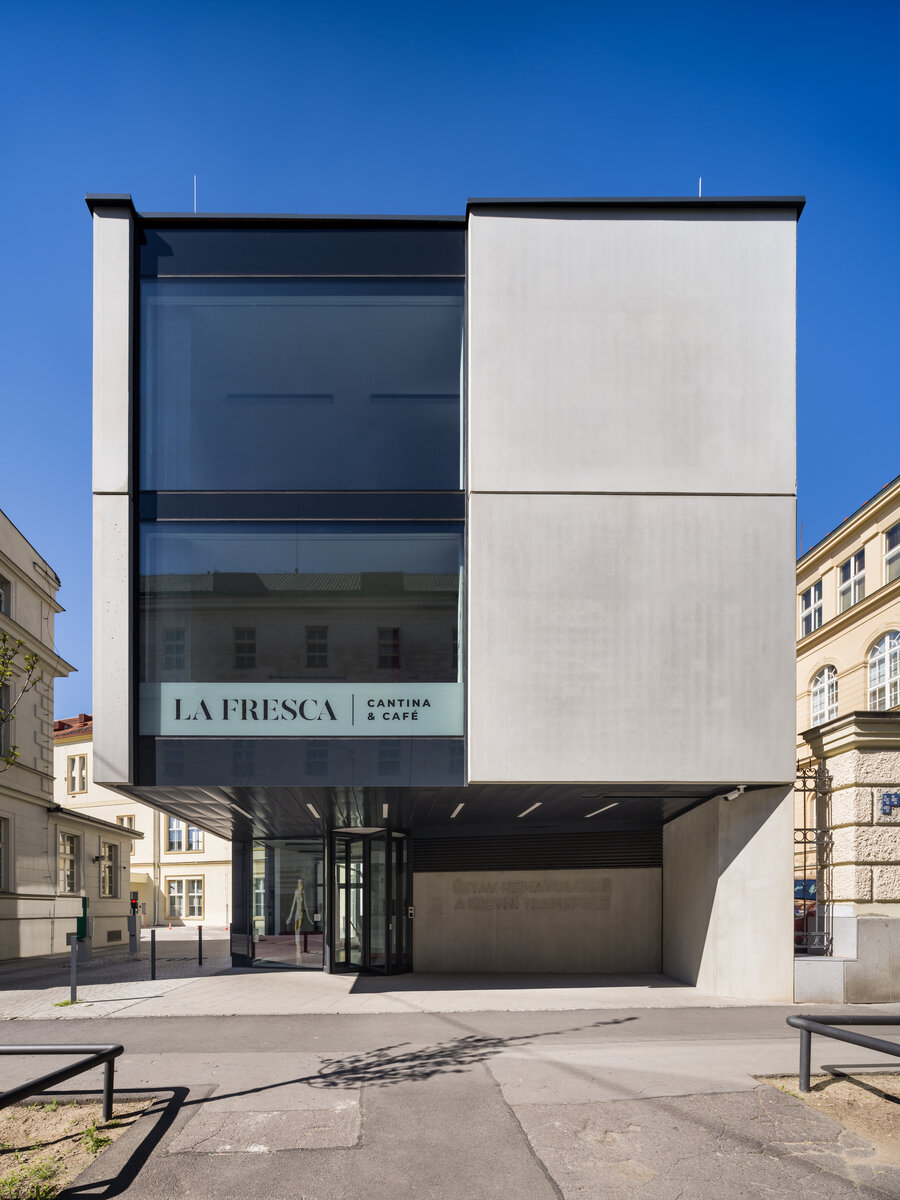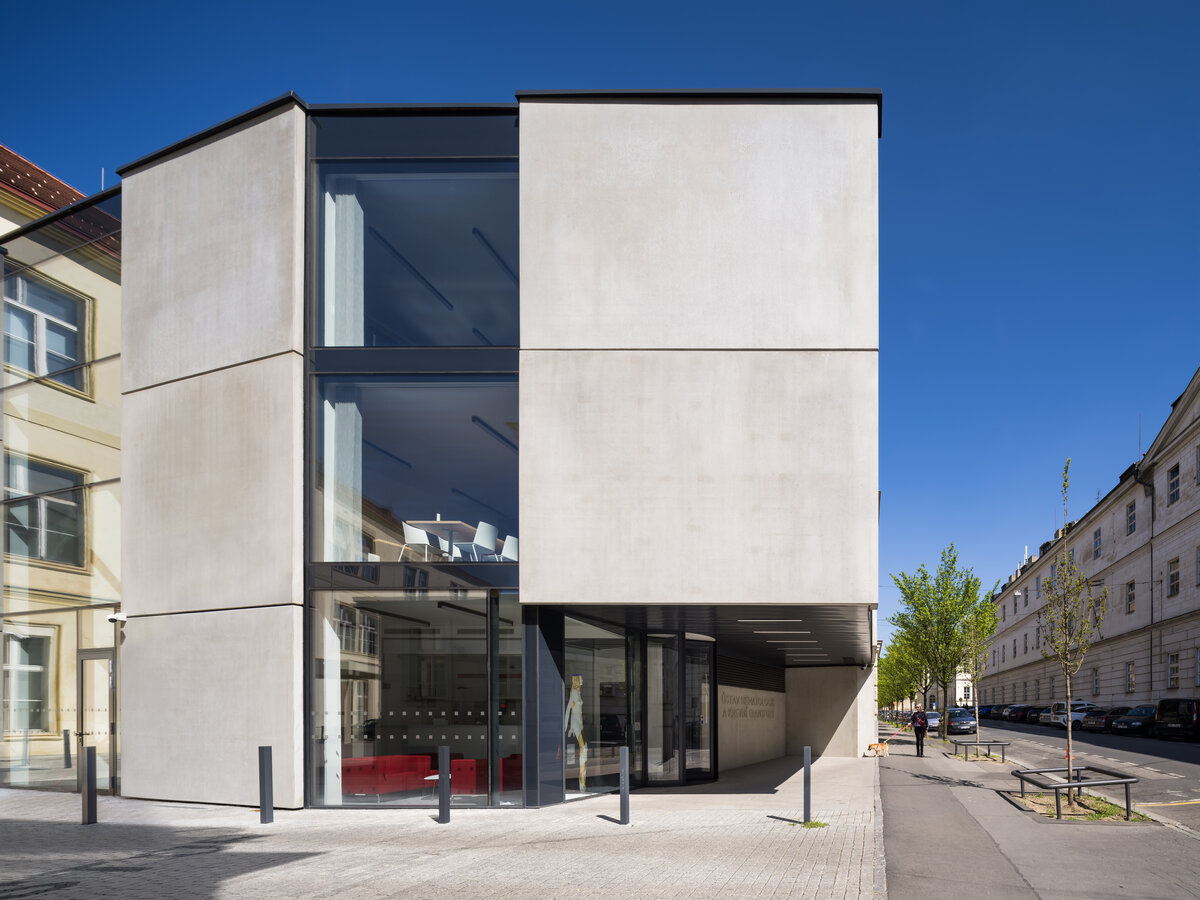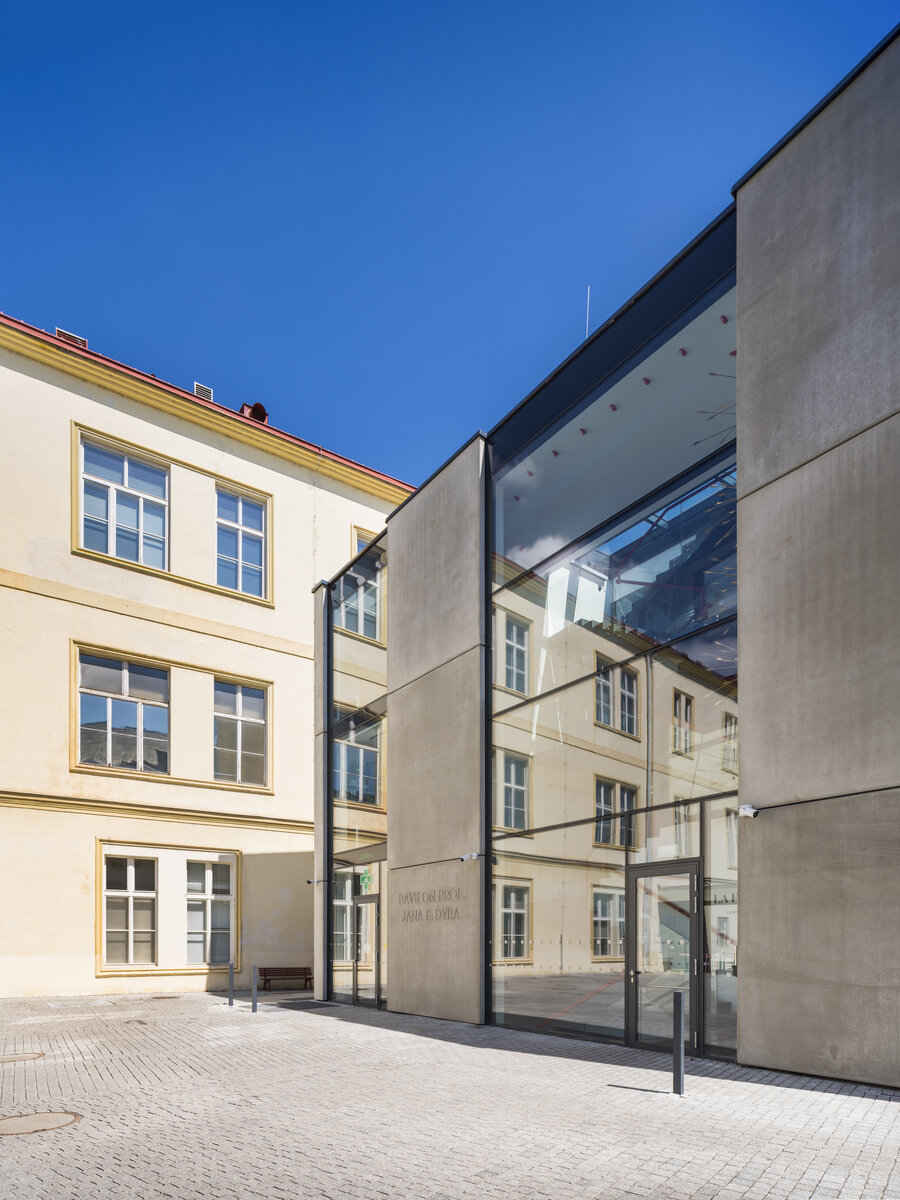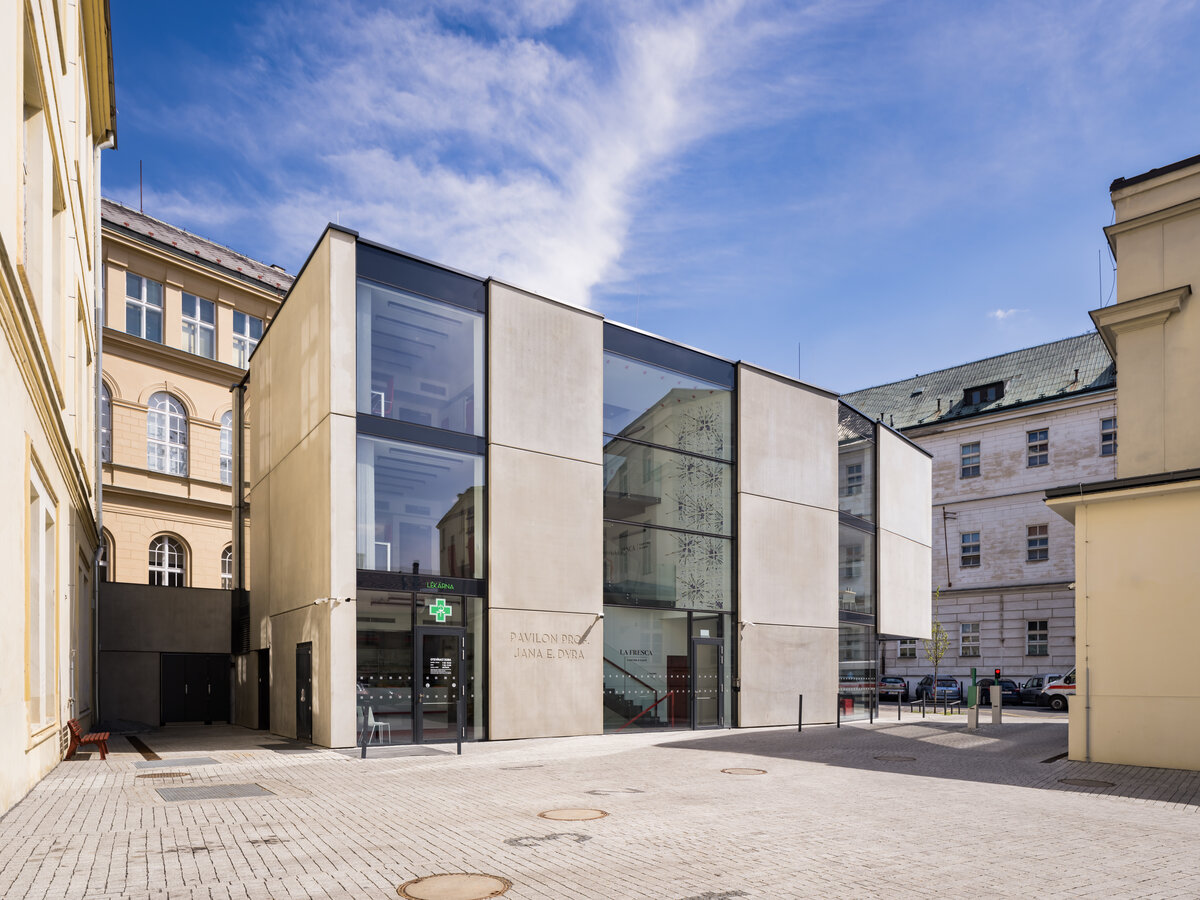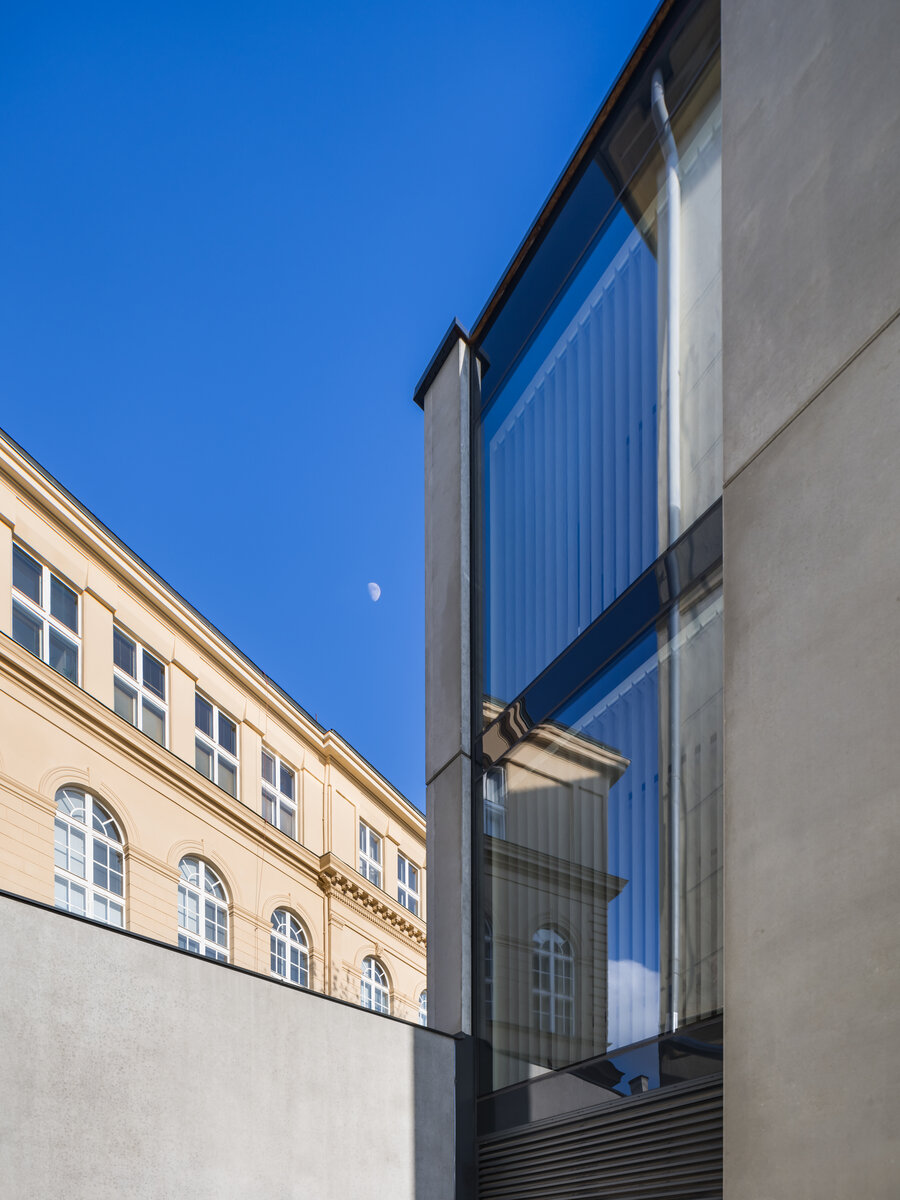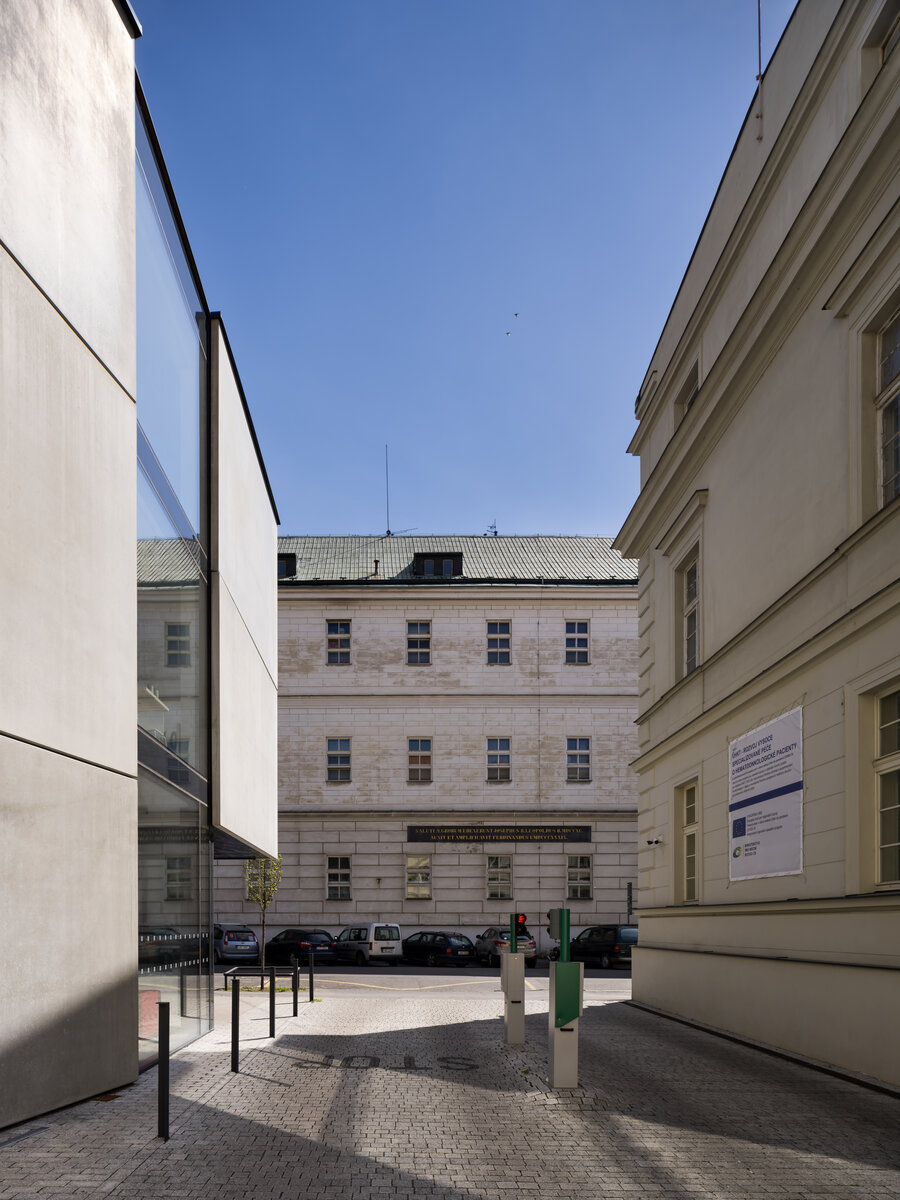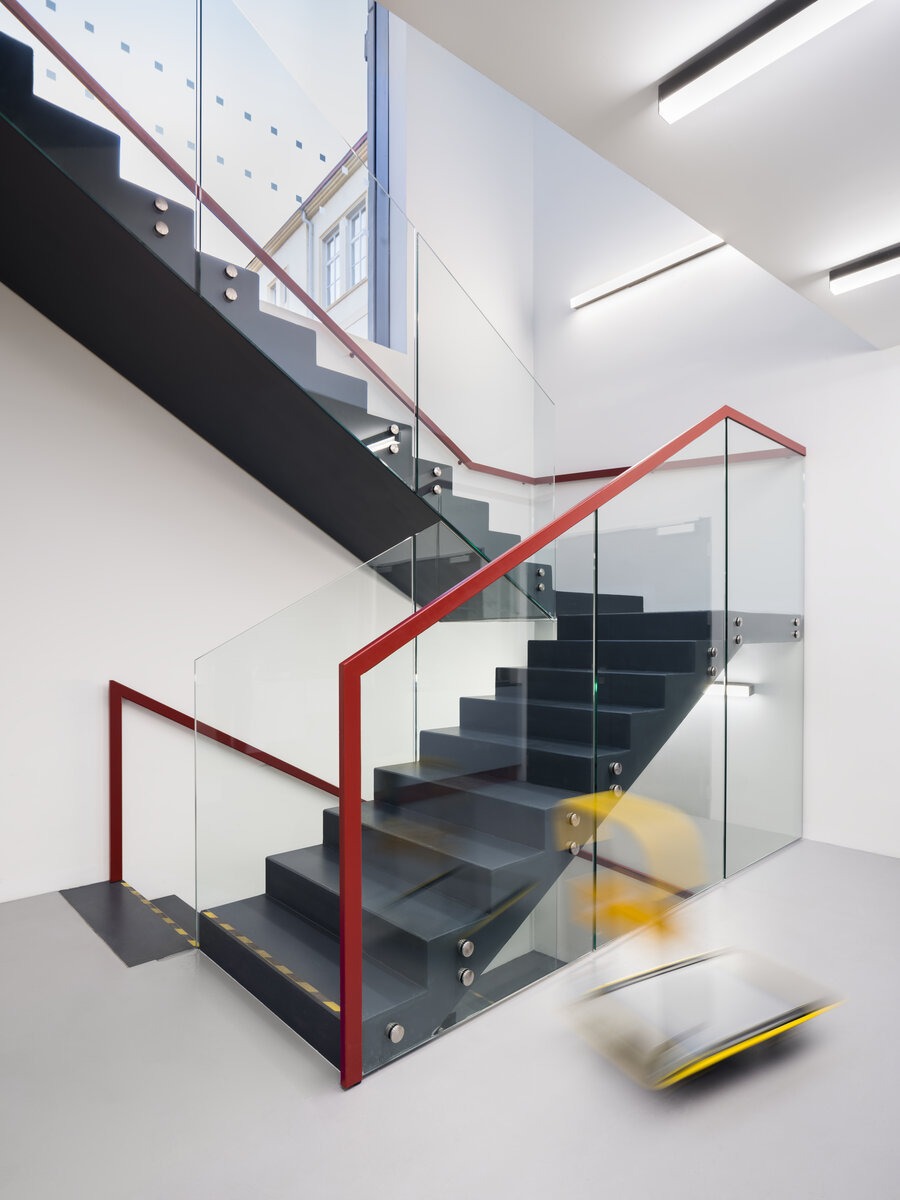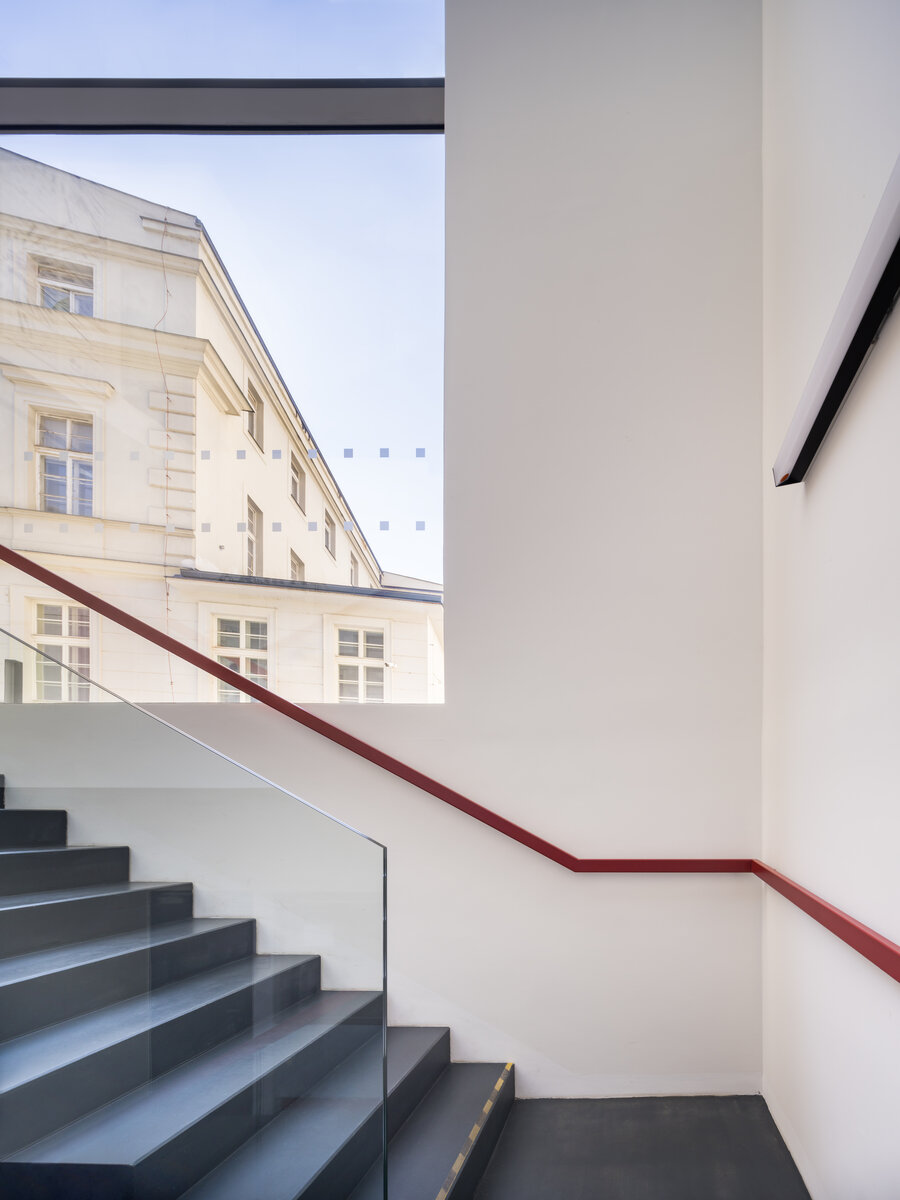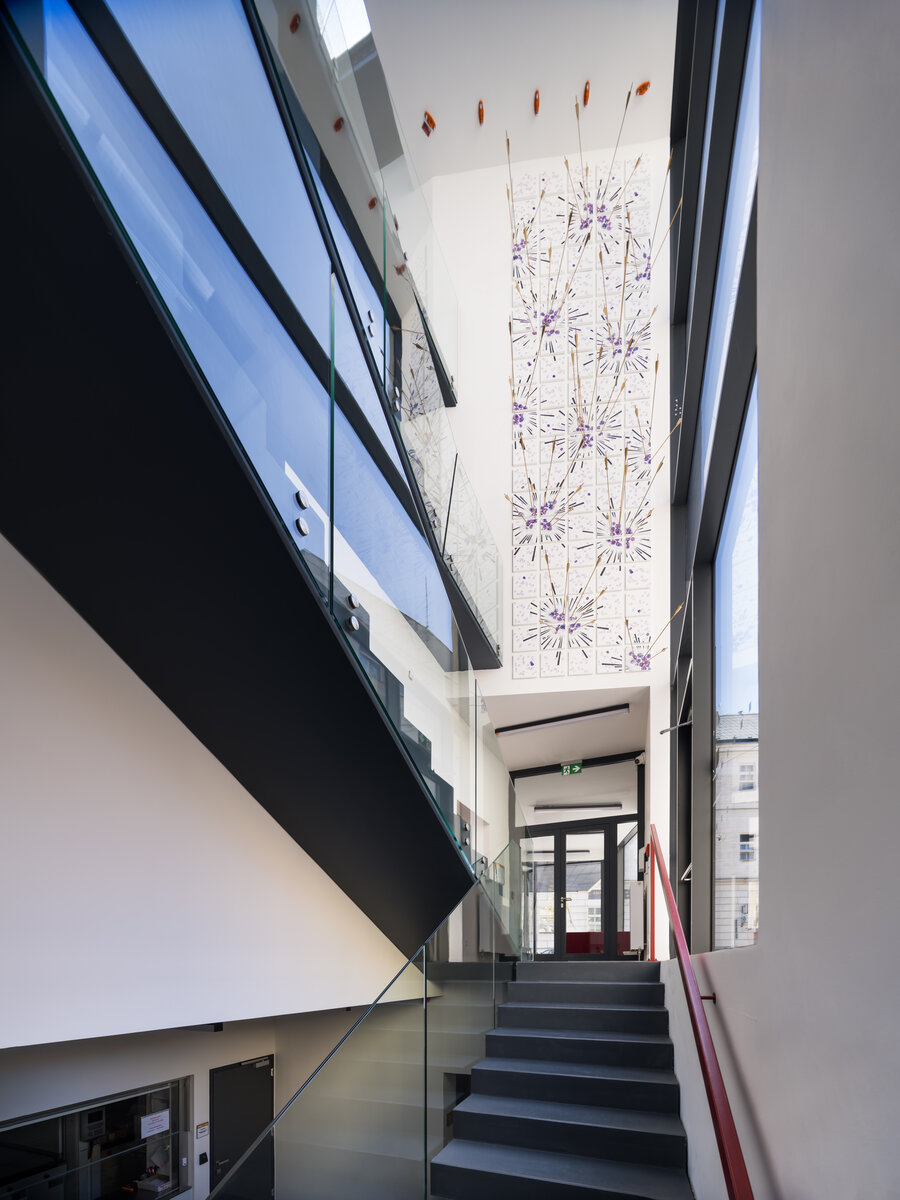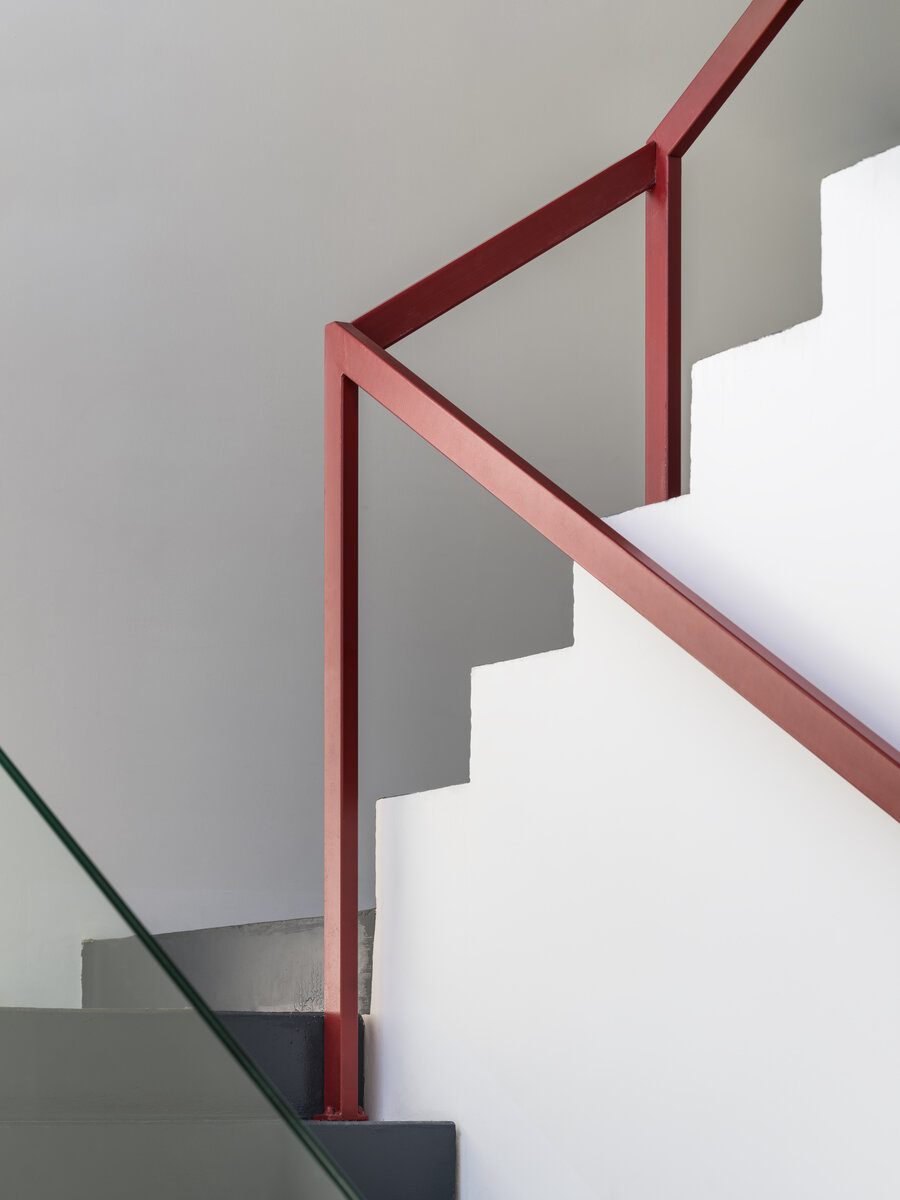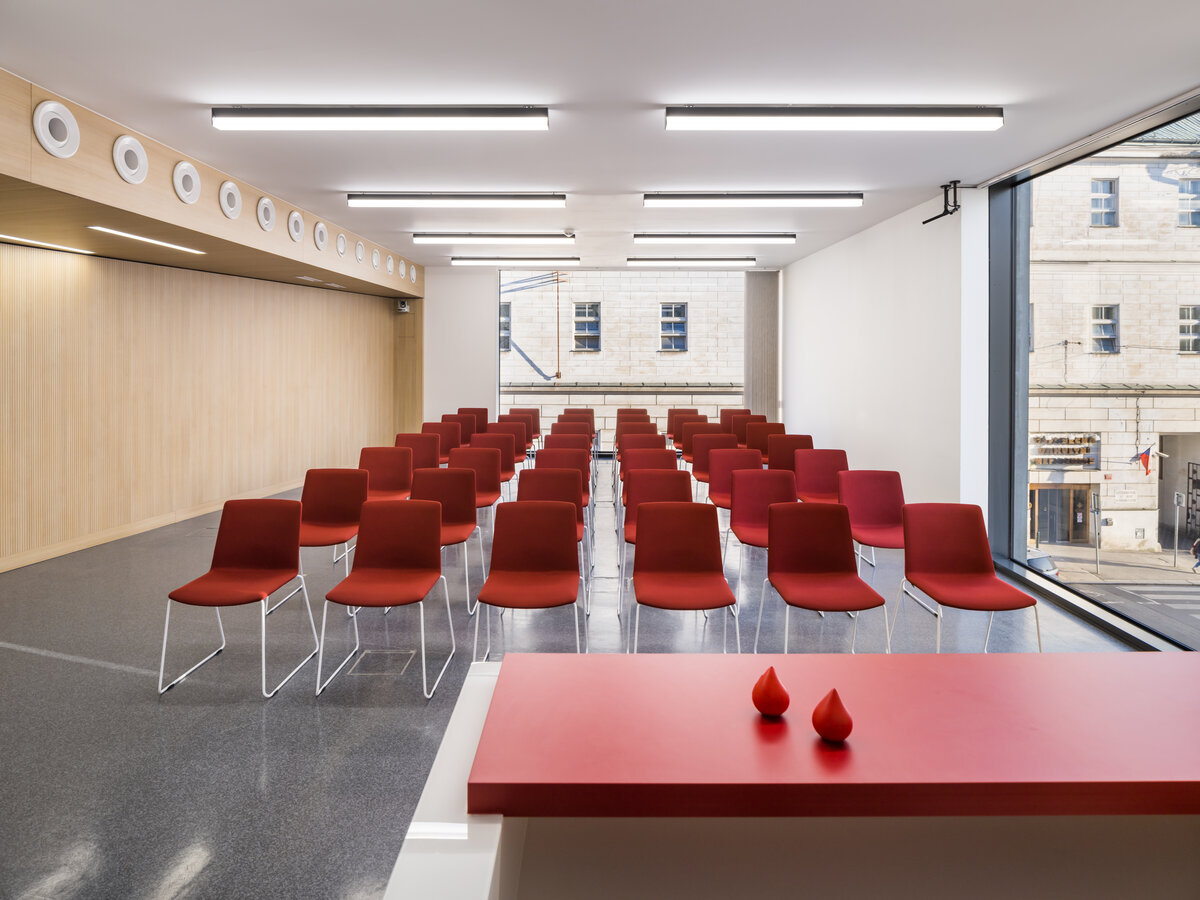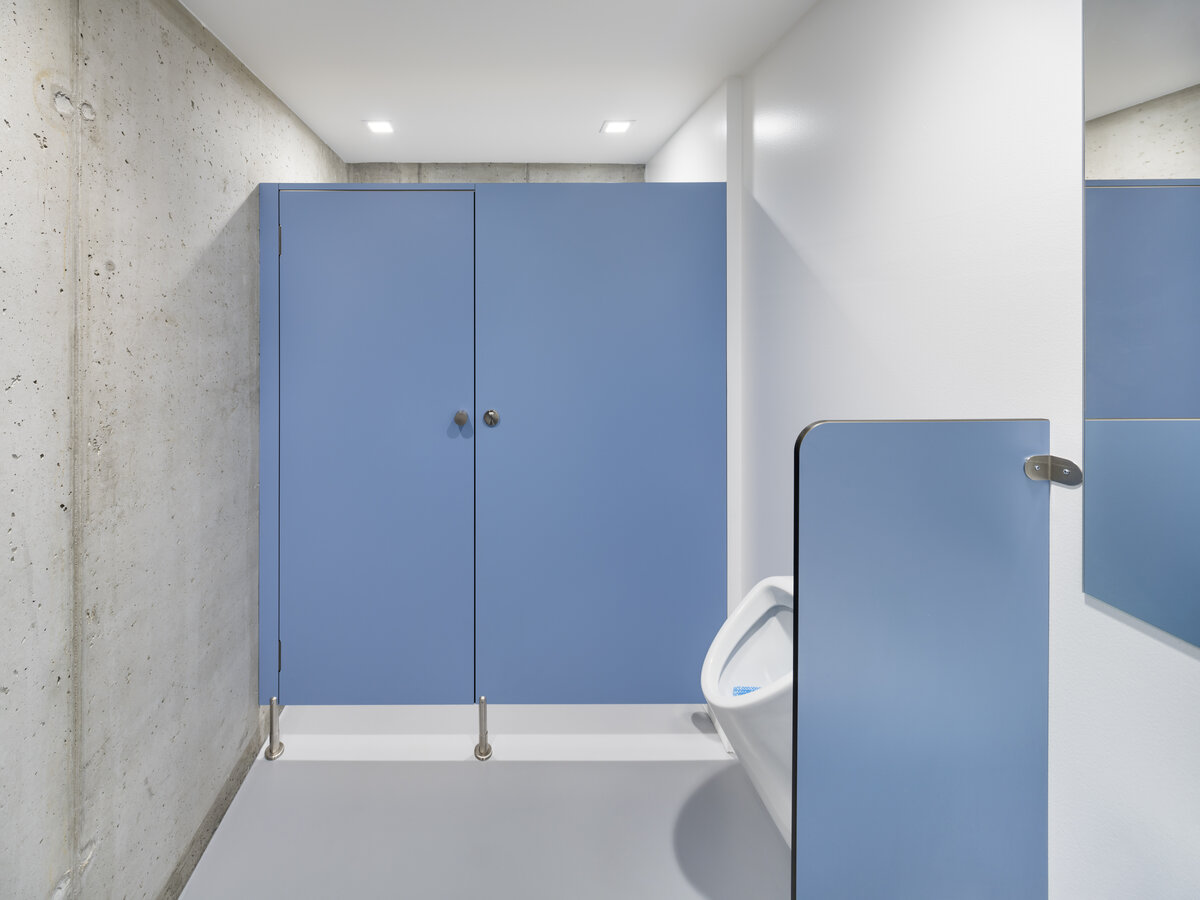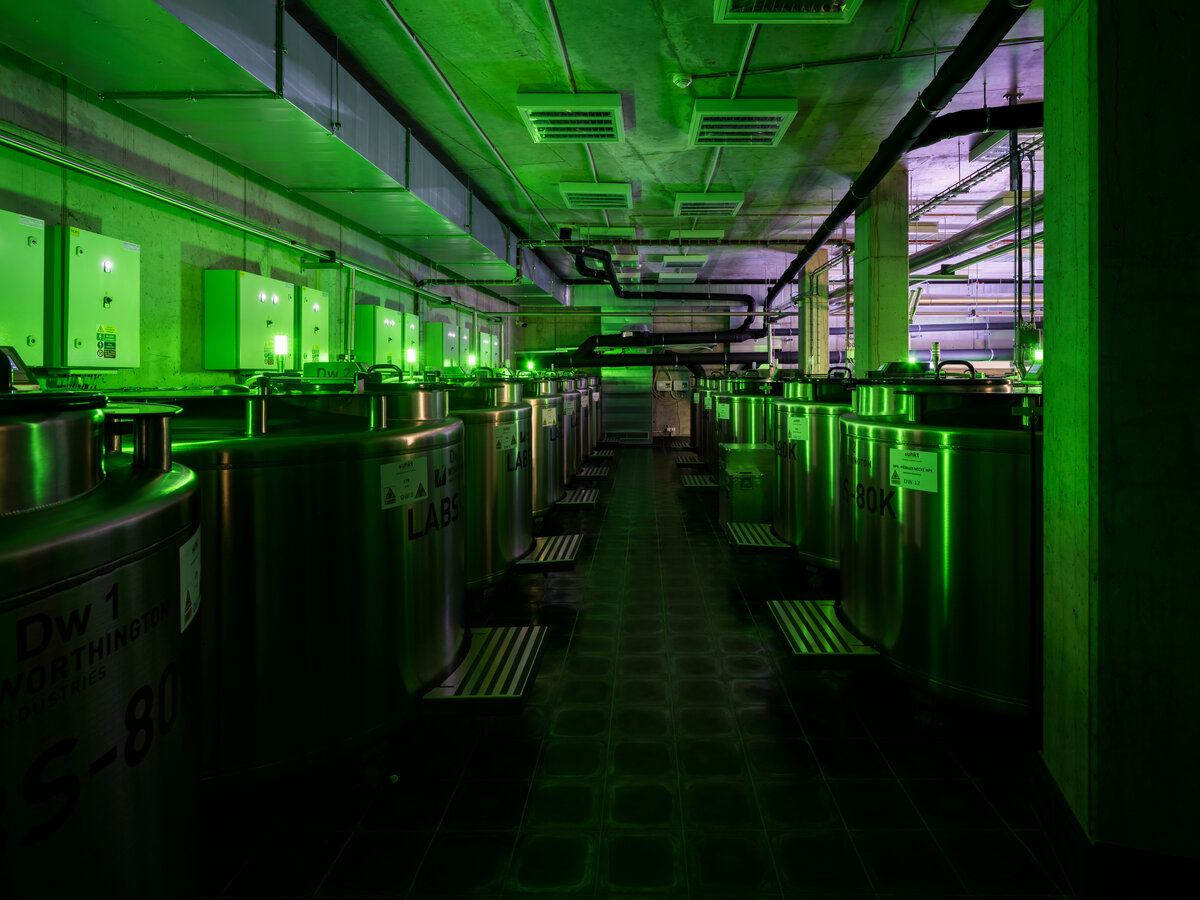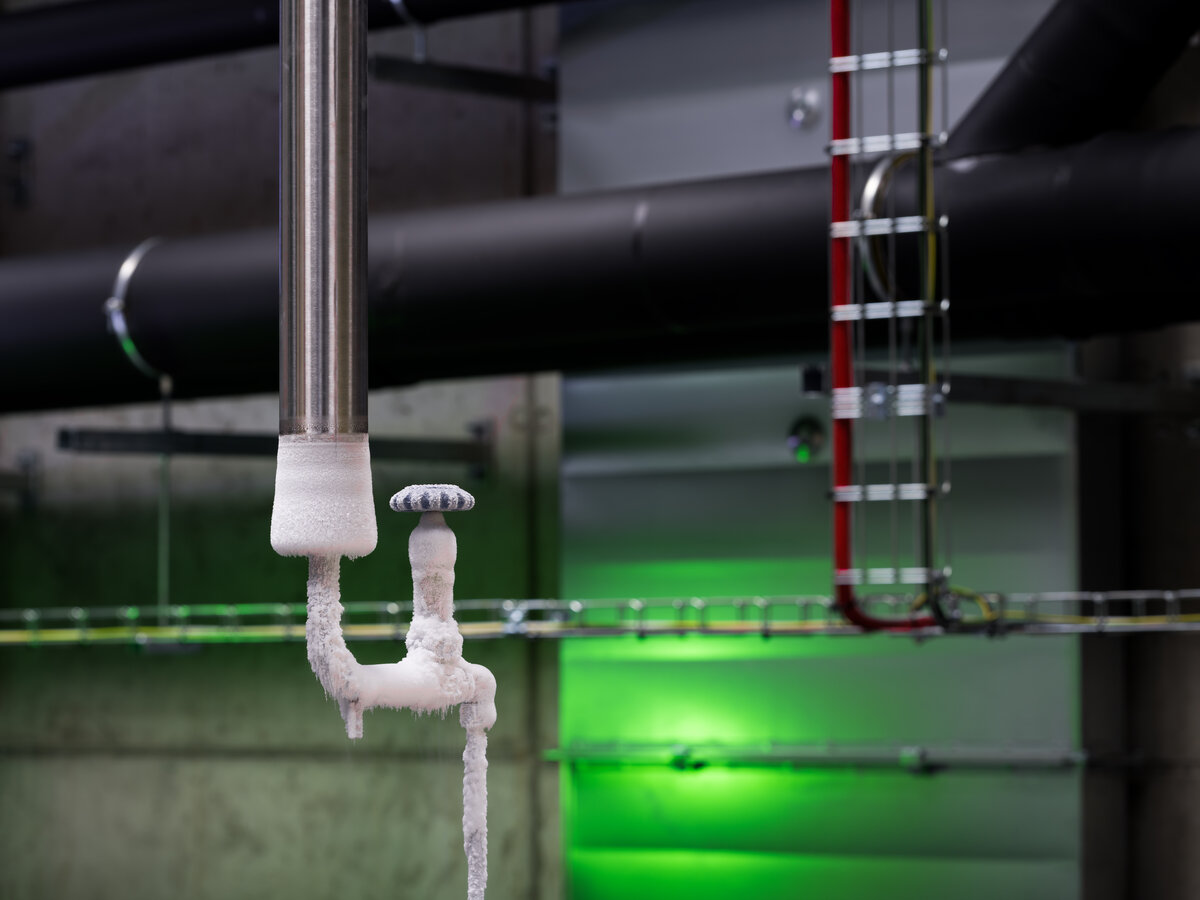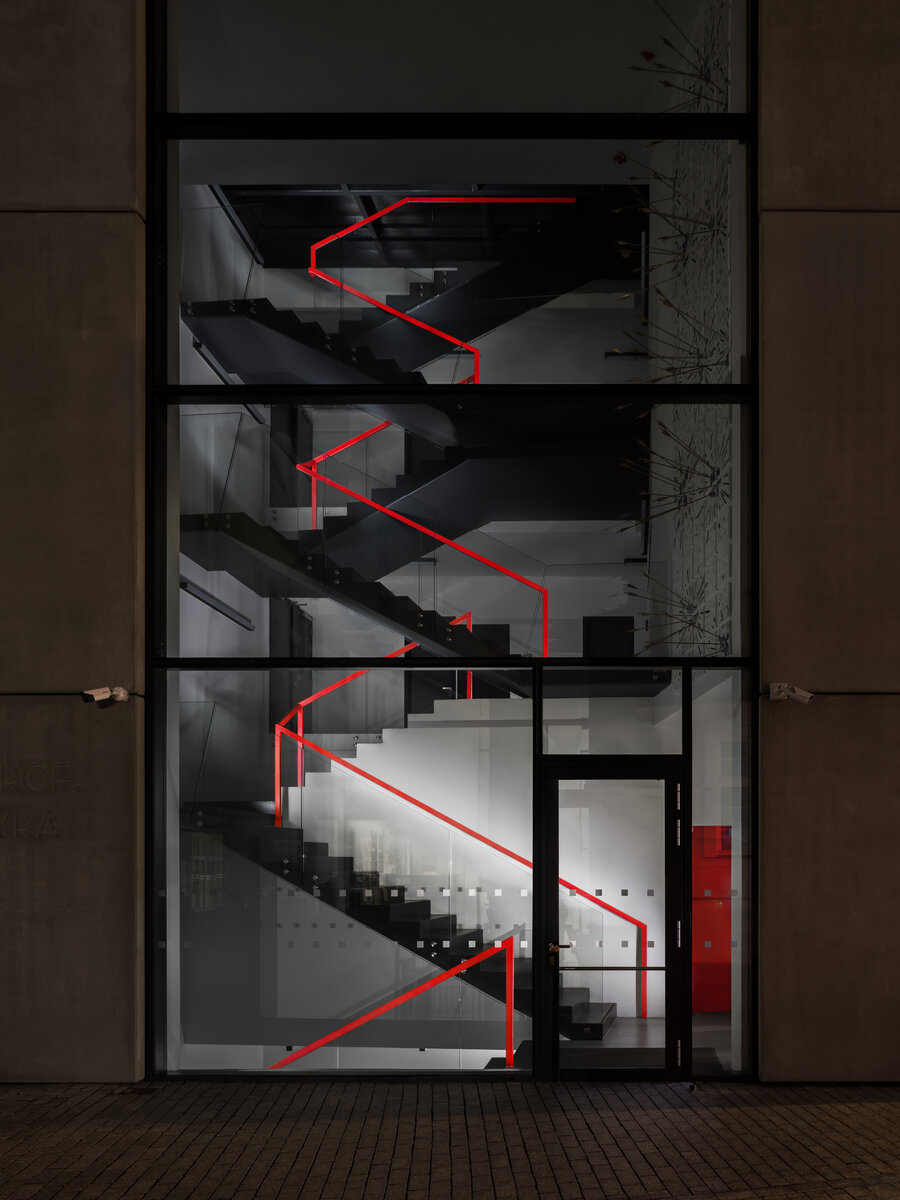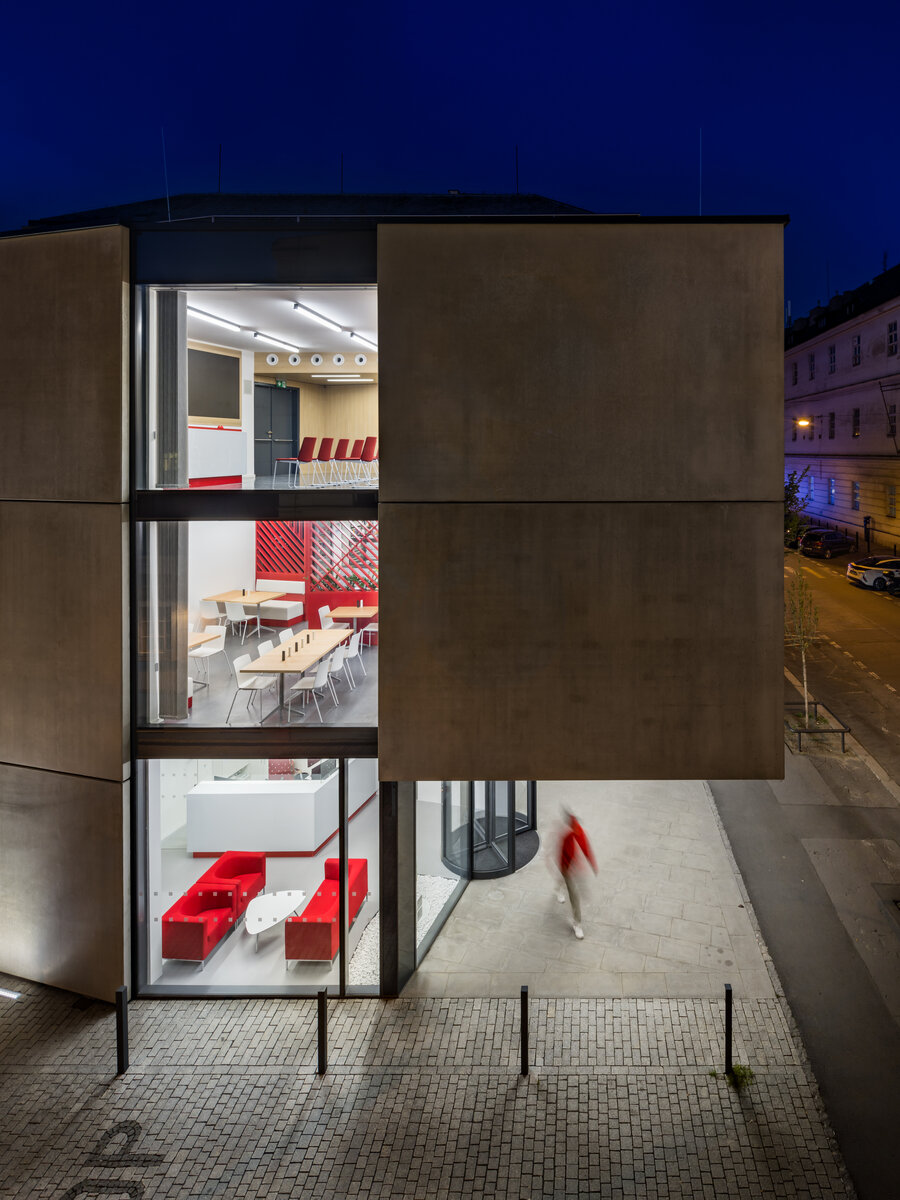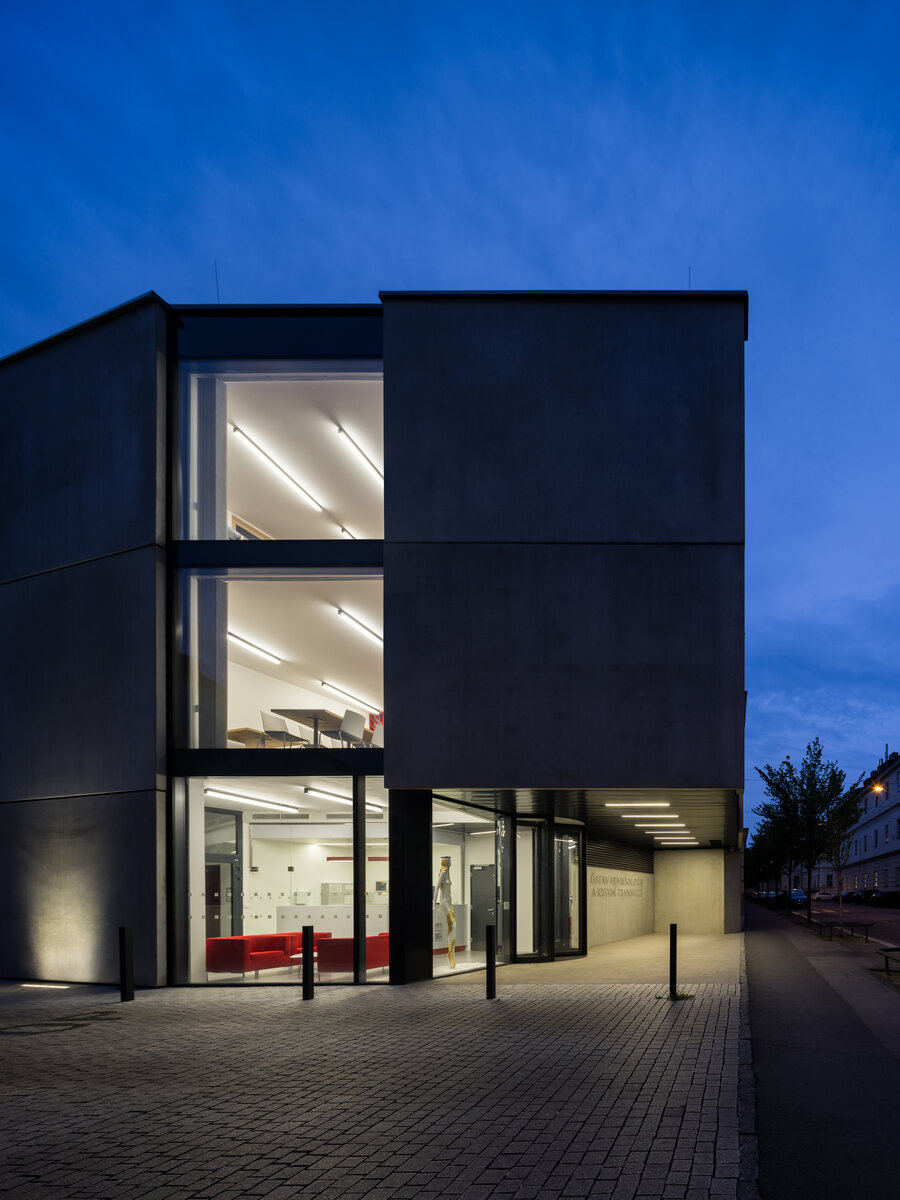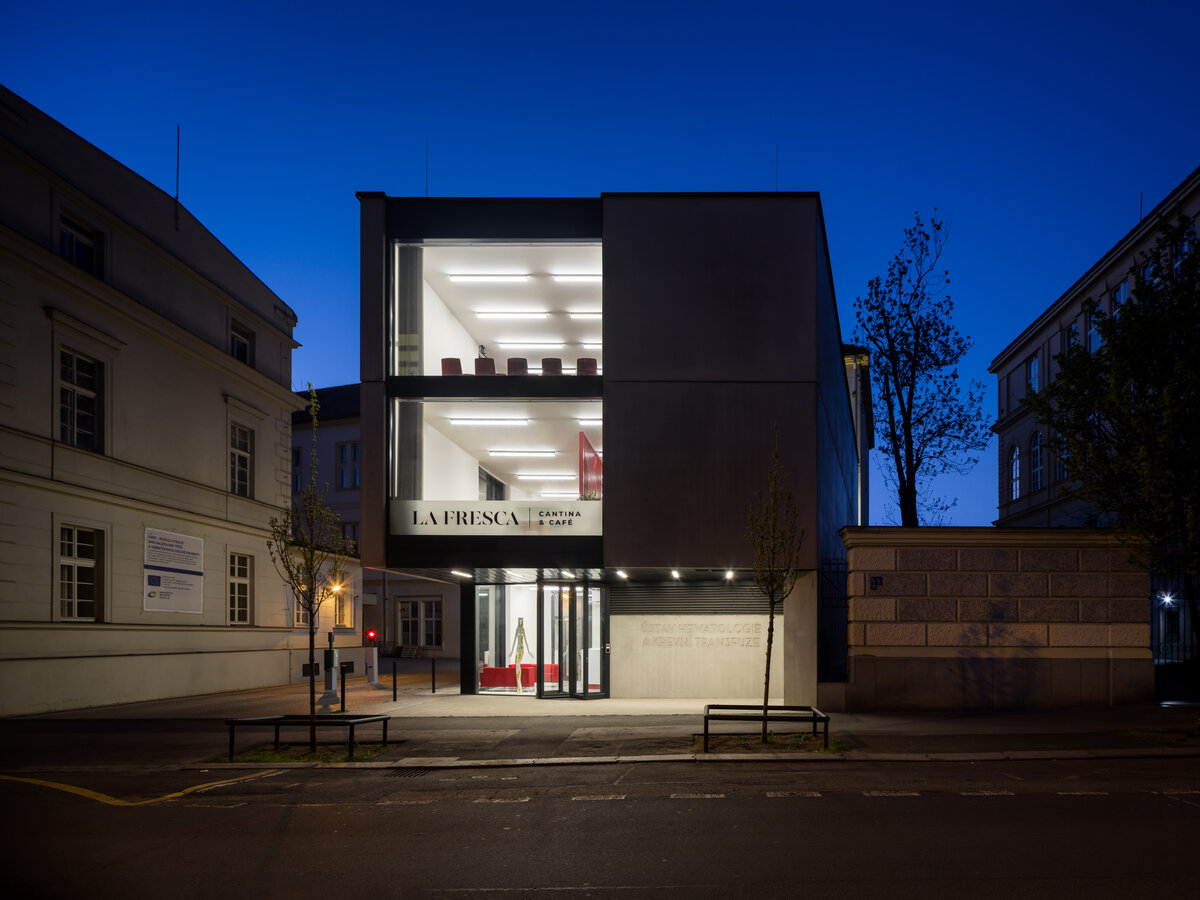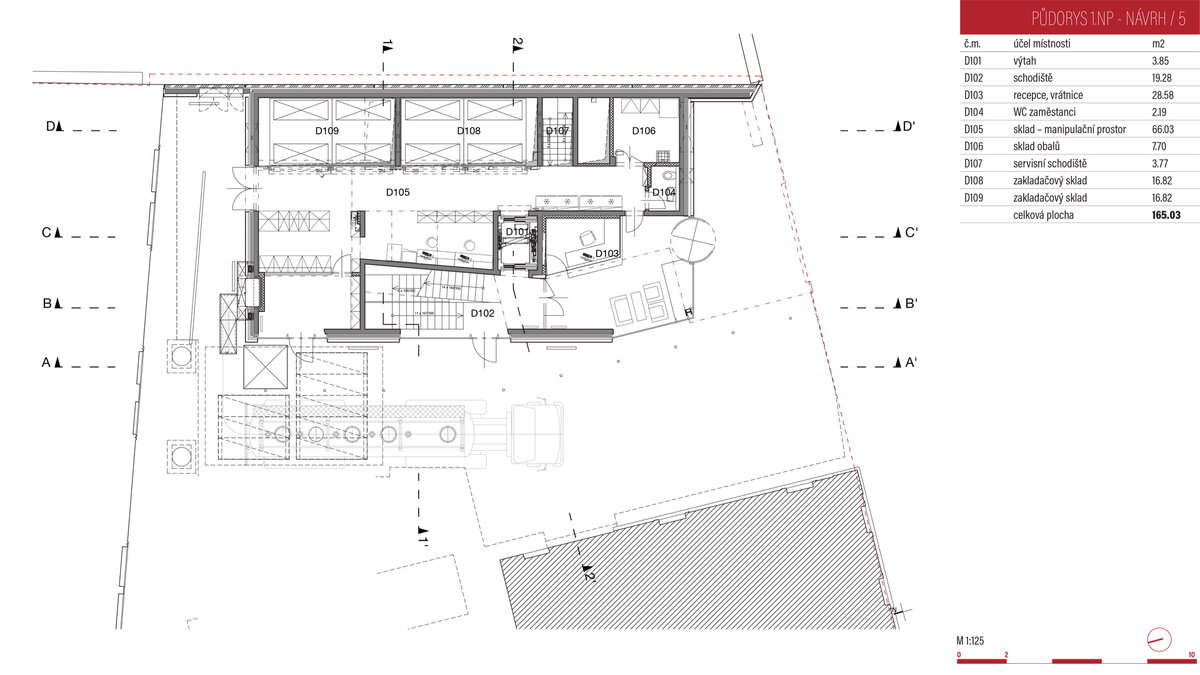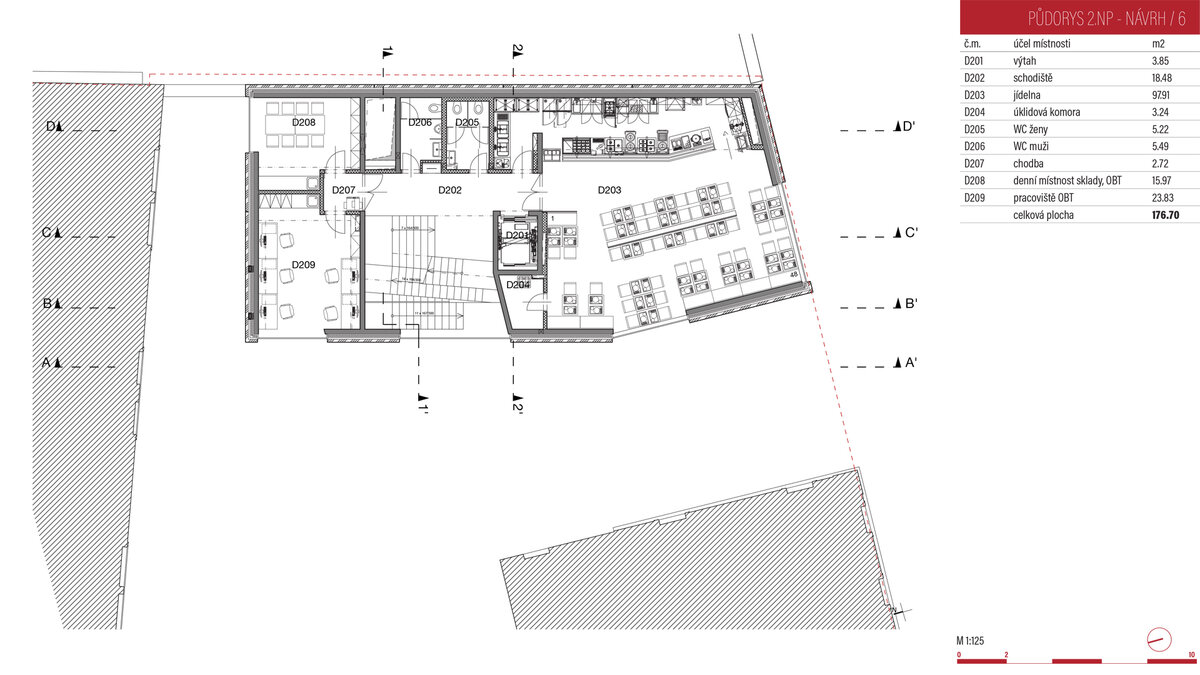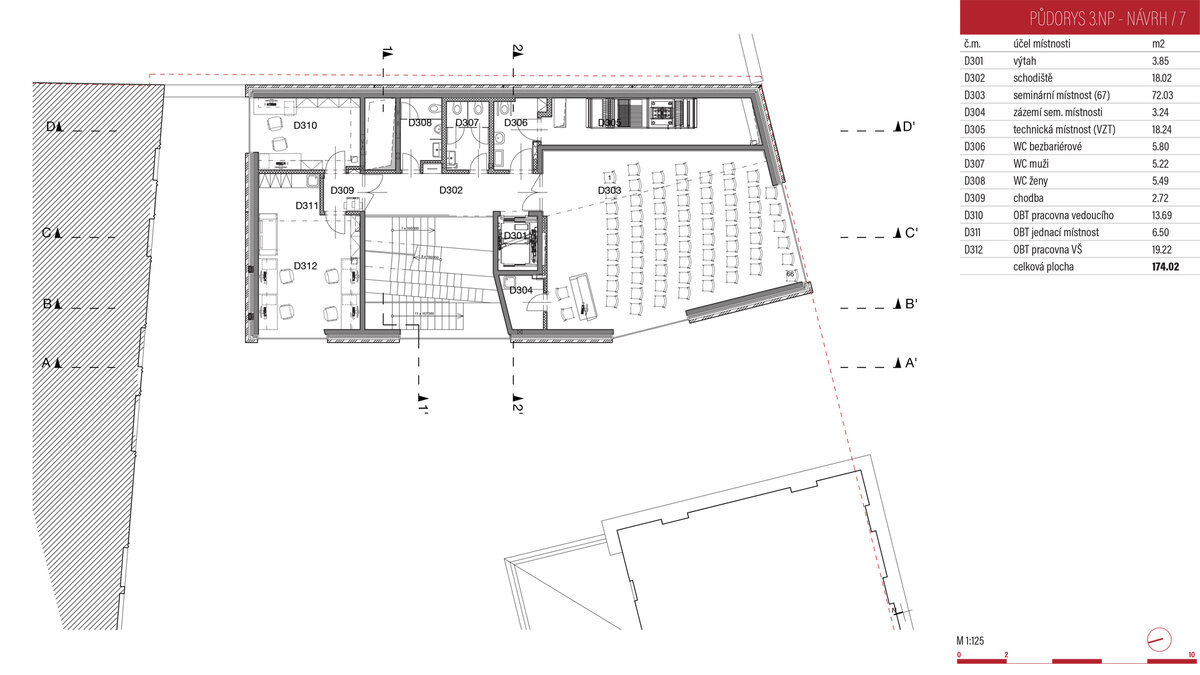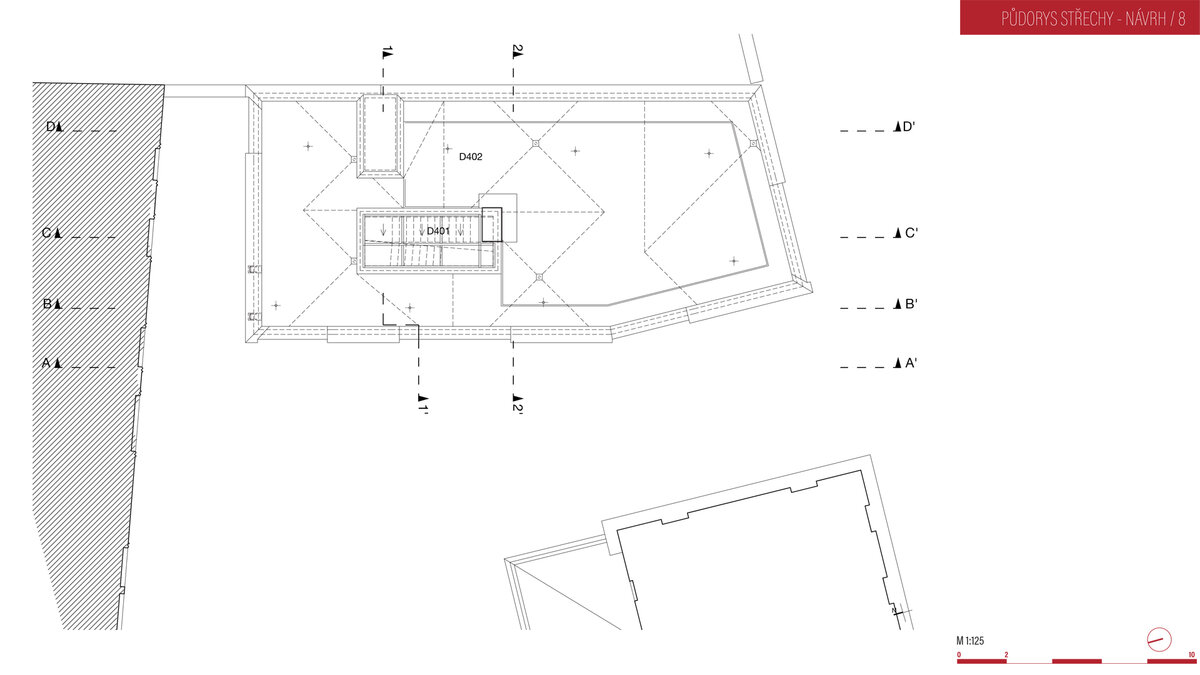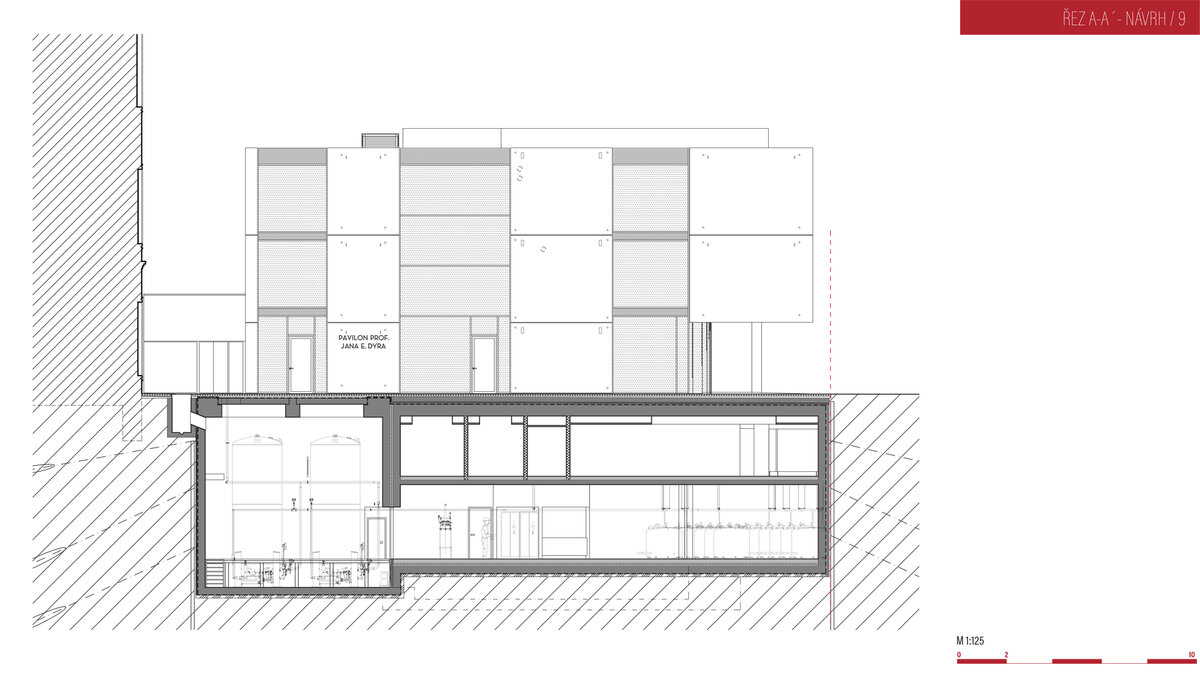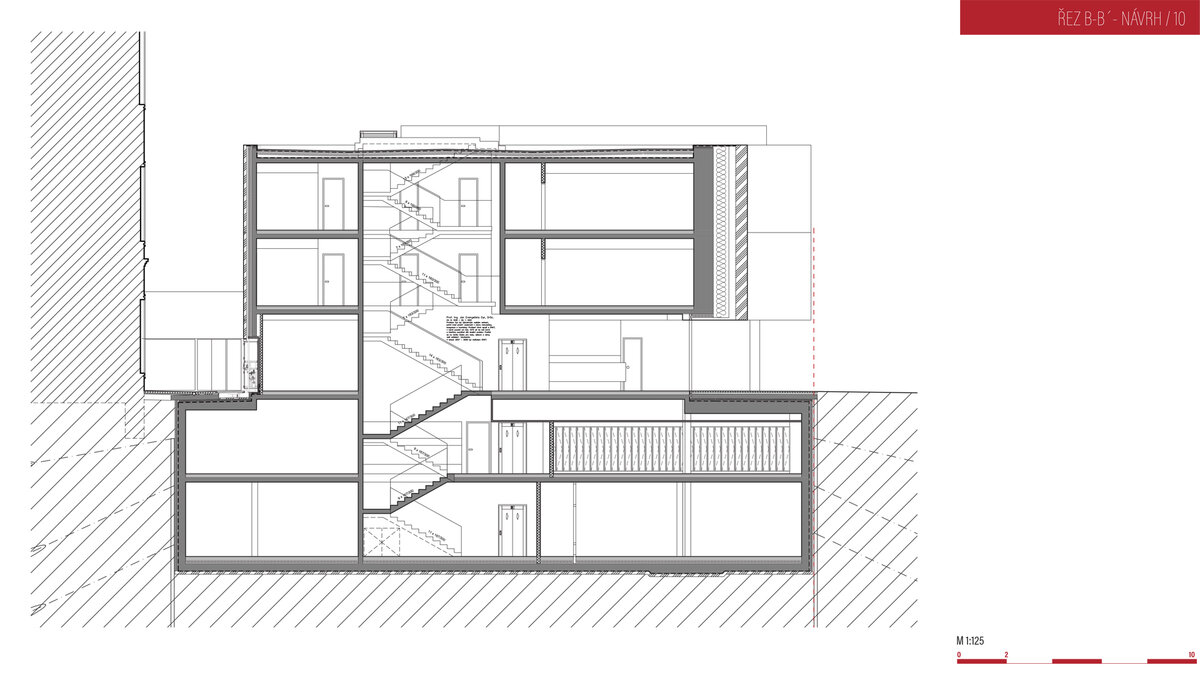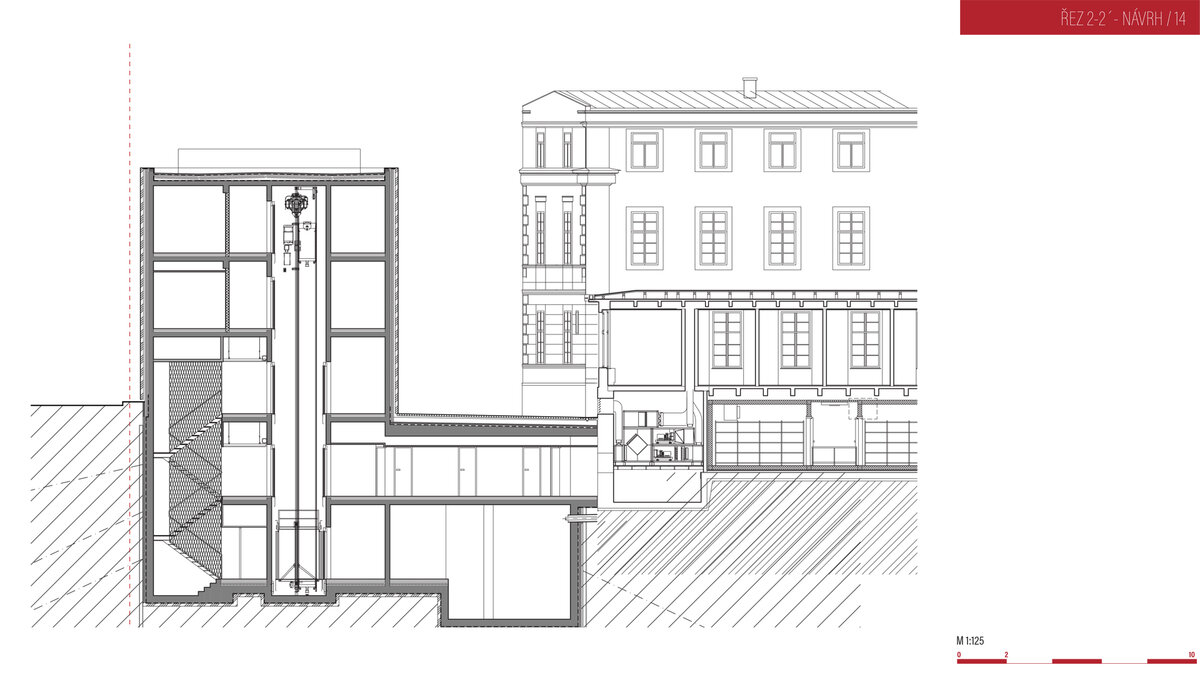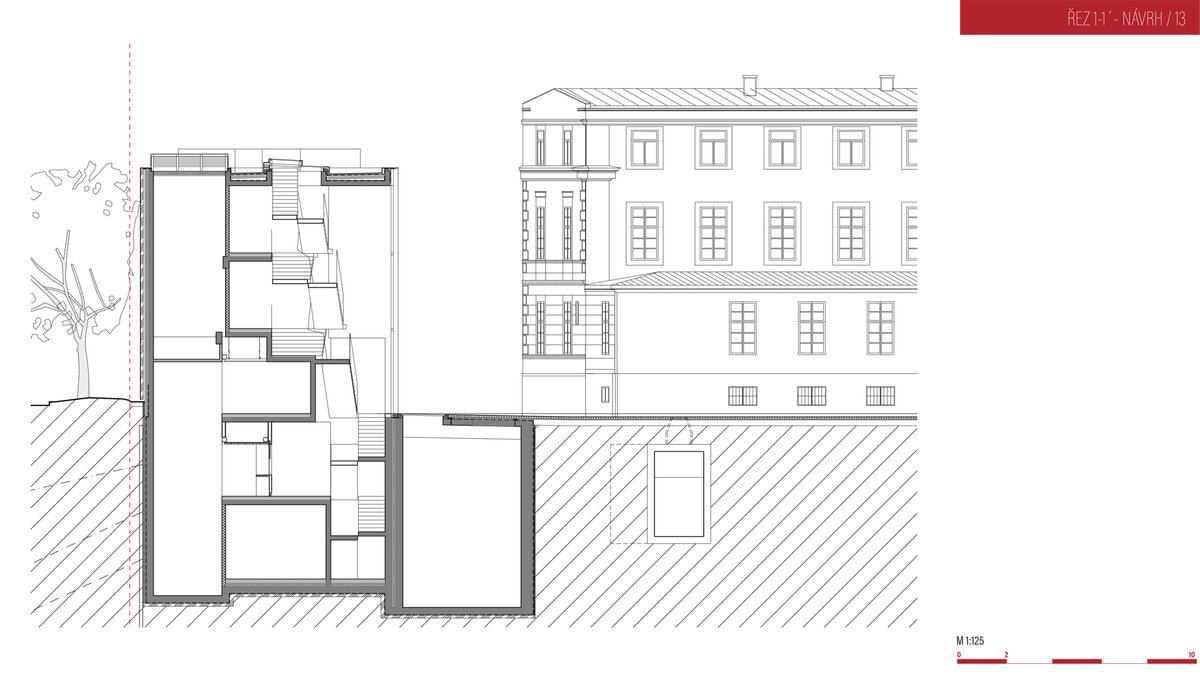| Author |
Ing. arch. Václav Čermák |
| Studio |
kcarch s.r.o. |
| Location |
U Nemocnice 2094/1, Praha 2, 128 00 |
| Investor |
Ústav hematologie a krevní transfuze
U Nemocnice 2094/1, Praha 2, 128 00 |
| Supplier |
Kania a.s. - projekční práce
Zlínstav a.s. + Geosan Group a.s. - stavba |
| Date of completion / approval of the project |
June 2022 |
| Fotograf |
Zdeněk Porcal - Studio Flusser |
The pavilion of Professor Dyr is the first of the planned comprehensive interventions on the campus of the Institute of Hematology. Fifty years since the last significant interventions in the hospital's space planning, it is a necessary step into the 21st century. For the architect, it is a challenge even in the broader context of social changes in the perception of urban creation. After years of rapid urbanization, thinning of the structure and chaotic expansion of settlements, the society is dominated by the desire to return maximum functions to their centres. The Institute of Hematology defended its location in the centre of Prague. And in order to fulfill its function as a top scientific workplace, it needs superior facilities. A modern building designed for sophisticated operations, equipped with current technologies for environmental quality, safety and aesthetics is the ideal standard for the future of the area.
The above-ground part of the building, which makes up less than half of its volume, is shaped like a simple prism, trimmed and modified by the surroundings, street line, mass of neighbouring historical buildings. The underground floors then fill the entire space between the existing buildings of the hospital. The underground levels of buildings are connected. The several axes and directions of communication between the existing buildings create the internal tension of the house, where the staircase area stands out the most. In terms of materials, the object is designed sparingly, simple window openings over several floors alternate with solid walls in a regular rhythm, emphasis is placed on proportional balance, simplicity and rationality of the building. Historic facades mirrored in the glass surface as a distant variation on Snozzi's Monte Carrasso.
Monolithic reinforced concrete frame with a suspended facade made of concrete panels.
Green building
Environmental certification
| Type and level of certificate |
-
|
Water management
| Is rainwater used for irrigation? |
|
| Is rainwater used for other purposes, e.g. toilet flushing ? |
|
| Does the building have a green roof / facade ? |
|
| Is reclaimed waste water used, e.g. from showers and sinks ? |
|
The quality of the indoor environment
| Is clean air supply automated ? |
|
| Is comfortable temperature during summer and winter automated? |
|
| Is natural lighting guaranteed in all living areas? |
|
| Is artificial lighting automated? |
|
| Is acoustic comfort, specifically reverberation time, guaranteed? |
|
| Does the layout solution include zoning and ergonomics elements? |
|
Principles of circular economics
| Does the project use recycled materials? |
|
| Does the project use recyclable materials? |
|
| Are materials with a documented Environmental Product Declaration (EPD) promoted in the project? |
|
| Are other sustainability certifications used for materials and elements? |
|
Energy efficiency
| Energy performance class of the building according to the Energy Performance Certificate of the building |
B
|
| Is efficient energy management (measurement and regular analysis of consumption data) considered? |
|
| Are renewable sources of energy used, e.g. solar system, photovoltaics? |
|
Interconnection with surroundings
| Does the project enable the easy use of public transport? |
|
| Does the project support the use of alternative modes of transport, e.g cycling, walking etc. ? |
|
| Is there access to recreational natural areas, e.g. parks, in the immediate vicinity of the building? |
|
